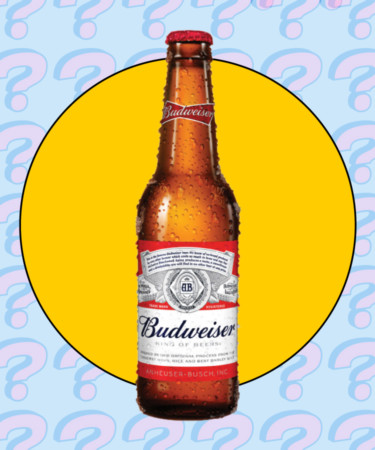If you’ve ever scratched your head after hearing someone walk into a bar and promptly order a “Bud Heavy,” you are not alone.
Bud Light is the best-selling and one of the most beloved beer brands in the United States, if not the world, so an entirely separate beer called Bud Heavy doesn’t seem out of the question. To help decipher this term, VinePair reached out to Garth Beyer, certified cicerone and owner of Garth’s Brew Bar in Madison, Wis.
“‘Bud Heavy’ means a Budweiser — a true Budweiser beer,” says Beyer. “I have also heard it called Bud Diesel, but that’s not the language that Midwesterners use.”
It is hard to pinpoint an exact date the term Bud Heavy was first used, but it was first defined in 2006 on Urban Dictionary as “an expression for a regular Budweiser for the hardcore kid.”
But this turn of phrase isn’t just used by the most fanatic frat boys; it has become relatively universal. “Even in my extended families, we use the term Bud Heavy,” says Beyer. “When we gather together, I have a group of uncles that ask specifically for Heavy and a group that orders Light. It’s important to make the distinction.”
Beyer says the first time he actually saw the term in writing was in 2019, when Utah changed its liquor laws. Previously, Utah had implemented an infamous law limiting breweries to produce beers with 3.2 percent ABV or less — forcing macro-breweries to create special low-alcohol beers or risk having a huge hole in their national sales. After the repeal of this law, Budweiser advertisements started popping up across the state, promoting the return of “full strength beer.”
Over the past few years, the phrase has gained popularity all over the U.S., especially as the craft beer movement has inspired beer drinkers to care more about what’s in their glasses. “When people use the phrase, I think running with the assumption that the person they are asking is a Bud Light drinker,” Beyer says, “it is tongue-in-cheek in a way — kind of like saying, ‘I am better than Bud Light.’”
It may be easier to disparage Bud Light based solely on how enormously popular the brand is. In 2019, Bud Light shipped 27.2 million barrels of beer and controlled 13.24 percent of the entire U.S. market share. Traditional Budweiser, in comparison, shipped 10.6 million barrels and controlled just 5.14 percent of the market share in the same year. Thus, it’s easy to assume that when you order Bud, your bartender is going to hand you something cobalt blue.
“Having to discern from Bud Light is more of a marketing thing than anything,” says Beyer, “So many more dollars are put towards Bud Light. Like anything, you are going to assume the more common answer.”
While craft beer has changed consumers’ palates, shifting to more hearty and flavorful brews, it hasn’t detracted sales from the largest beer brands. “Craft beer has obviously grown exponentially, but it has not stolen away from the macro fellas,” says Beyer. “They still drink the same amount of macro, but are just including craft in their drinking.”
Budweiser has the means to bring this term into the national language, and some beer pros think doing so would help boost the sales and reputation of the brand. “Budweiser should be leaning into making ‘Bud Heavy’ a more legitimate name; they even own the trademark,” says Beyer. “Doing that would show they are listening to the consumer’s desires and how their product is being received.”
